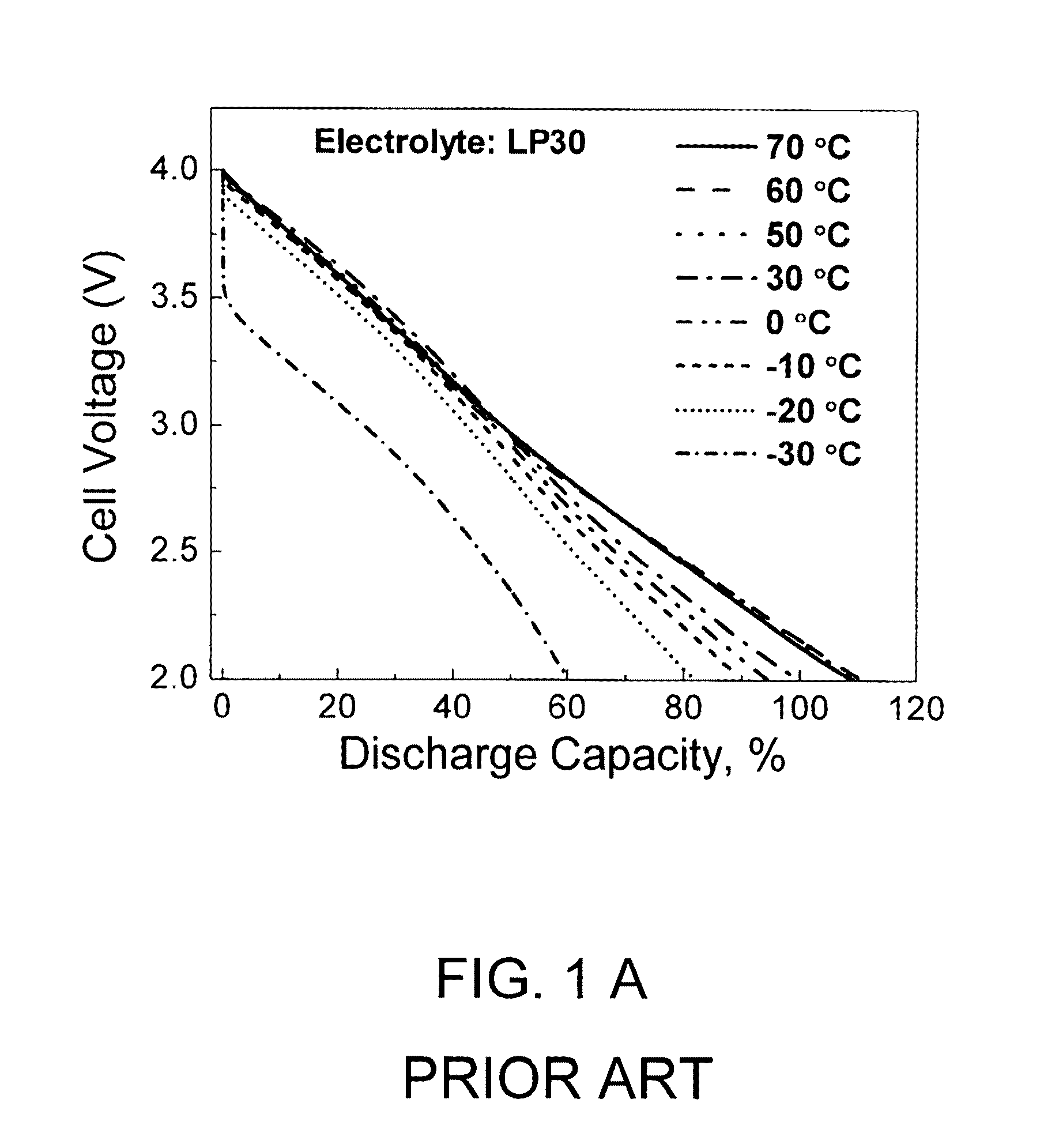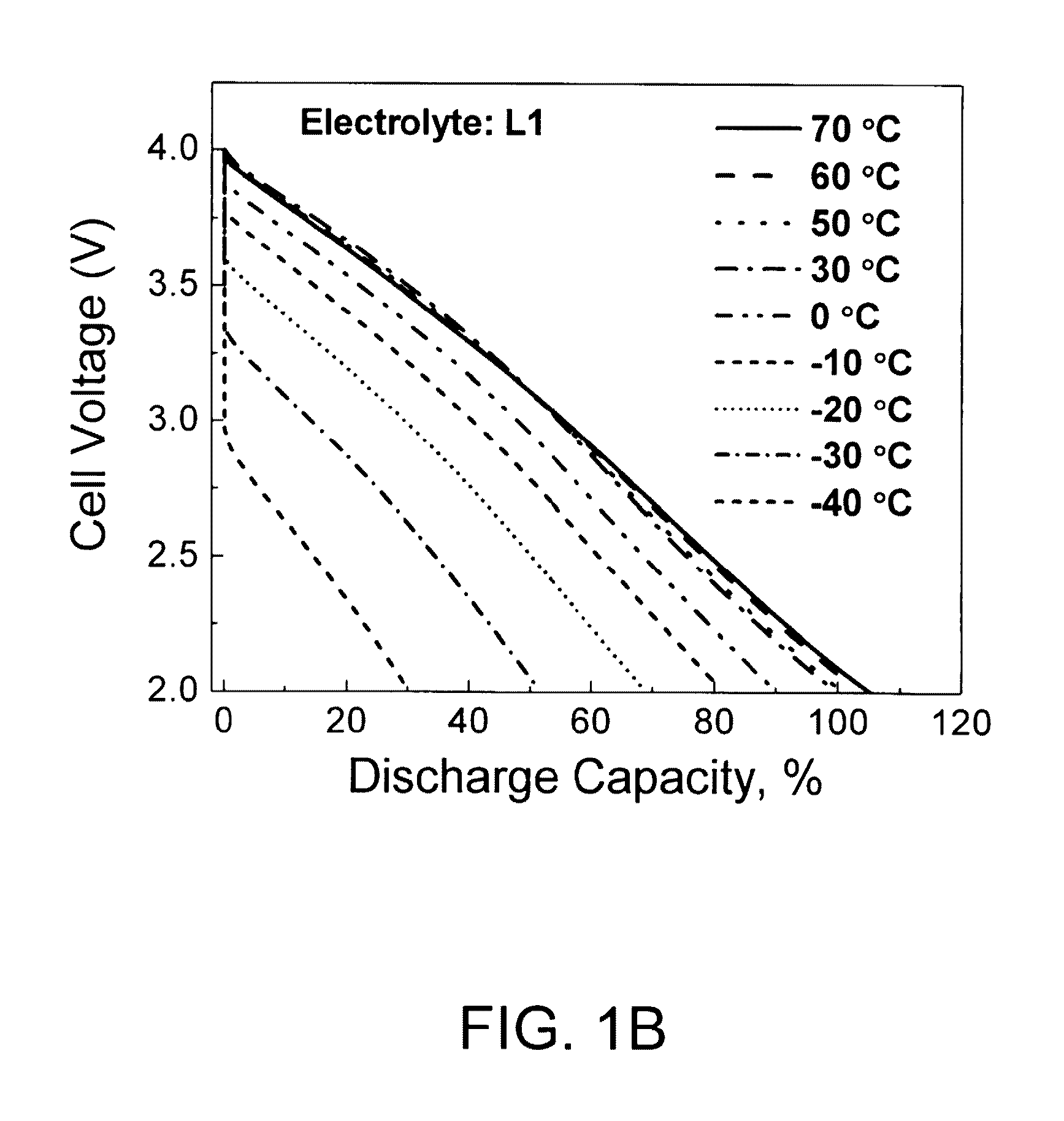Wide operating temperature range electrolytes for lithium-ion capacitors achieving high performance
a lithium-ion capacitor and high-performance technology, applied in the field of lithium-ion-capacitor (lic) laminate cells, can solve the problems of limited studies on charge storage mechanisms and inadequate reports on the low temperature performance of lics, and achieve wide operating temperatures, and excellent high-performance characteristics and specifications
- Summary
- Abstract
- Description
- Claims
- Application Information
AI Technical Summary
Benefits of technology
Problems solved by technology
Method used
Image
Examples
Embodiment Construction
Experimental
[0043]Commercial active materials were used as received for both the positive and negative electrodes. The positive electrode (PE) was prepared by coating a slurry mixture of activated carbon (AC, YP-50F, Kuraray Chemical Co; Japan) and polytetrafluoroethylene (PTFE) as the binder by the mass ratio of 94:6 on an Al foil substrate (Exopack™, 20 μm in thickness). The slurry mixture of the negative electrode (NE) was composed of hard carbon (HC, Carbotron P(J). Kureha Japan) and PTFE as a binder by the mass ratio of 96:4. After the slurry was prepared, it was coated onto a Cu foil substrate that had a thickness of 14 μm. Then the electrodes were dried at 160° C. for 12 hours in an oven with constant flowing air. After the electrodes were dried, the AC and HC electrode sheets were calendared by heated-rolling mill to compress them to the desired thickness of 100 μm for AC and 80 μm for HC, which is only the thickness of the coated active material. All the electrode sheets we...
PUM
 Login to View More
Login to View More Abstract
Description
Claims
Application Information
 Login to View More
Login to View More - R&D
- Intellectual Property
- Life Sciences
- Materials
- Tech Scout
- Unparalleled Data Quality
- Higher Quality Content
- 60% Fewer Hallucinations
Browse by: Latest US Patents, China's latest patents, Technical Efficacy Thesaurus, Application Domain, Technology Topic, Popular Technical Reports.
© 2025 PatSnap. All rights reserved.Legal|Privacy policy|Modern Slavery Act Transparency Statement|Sitemap|About US| Contact US: help@patsnap.com



